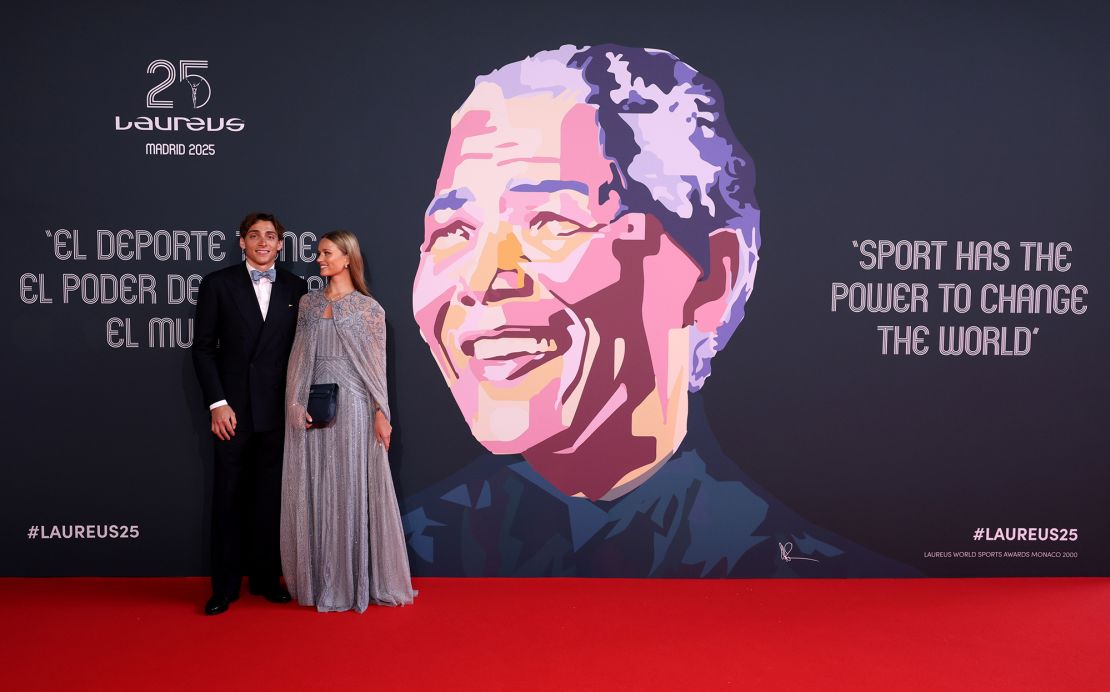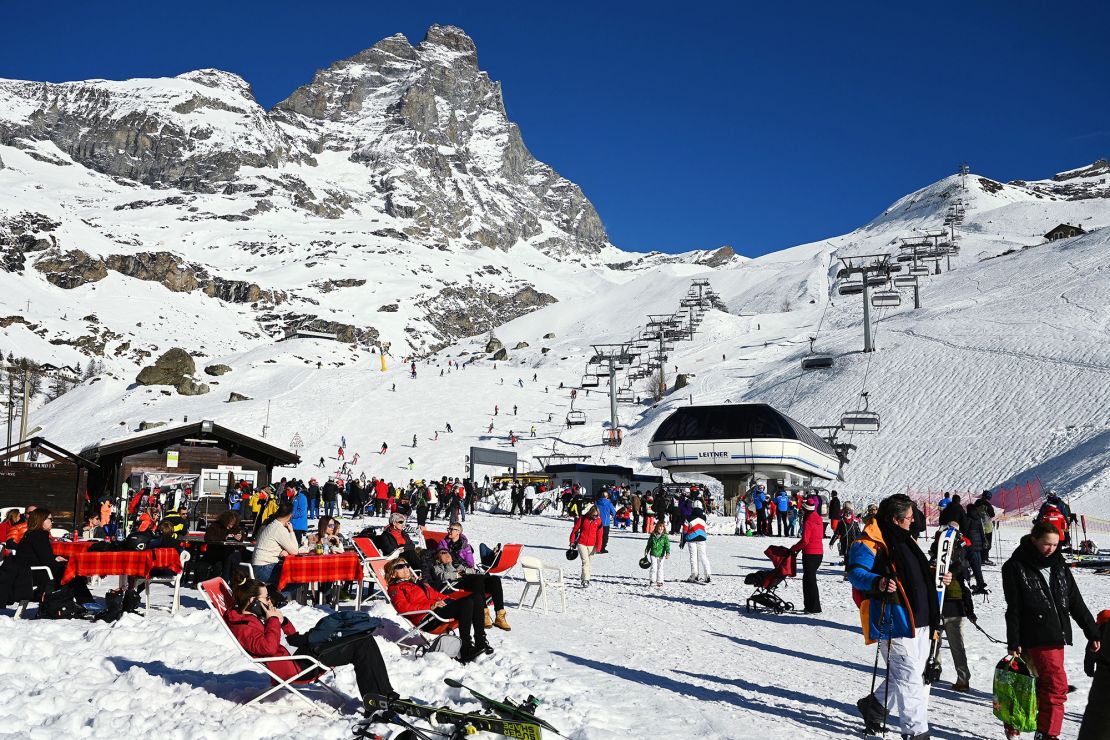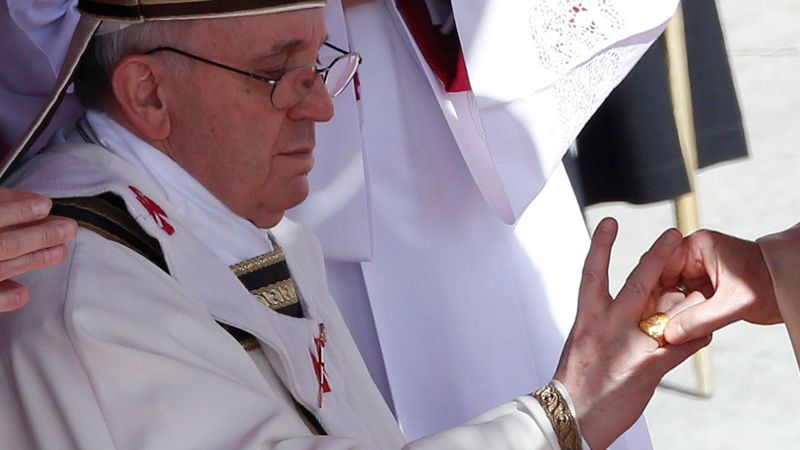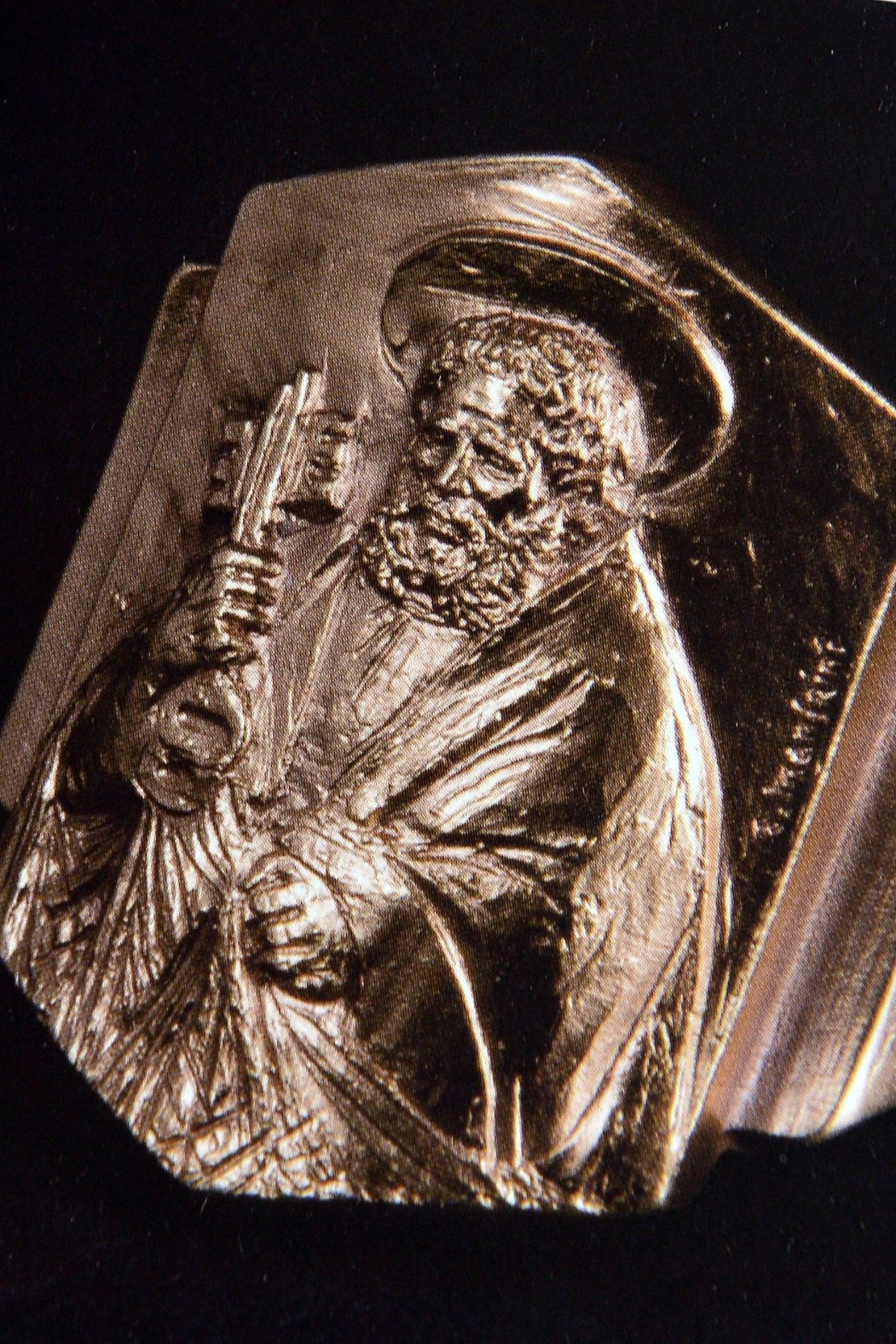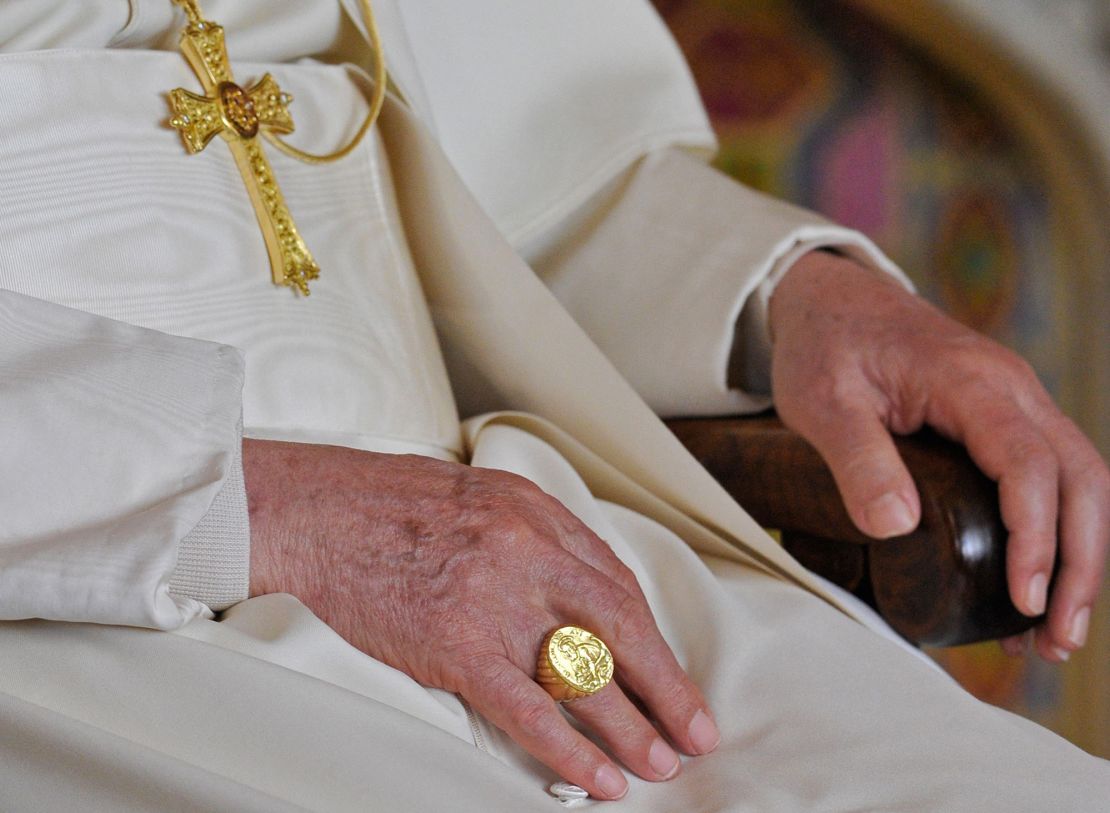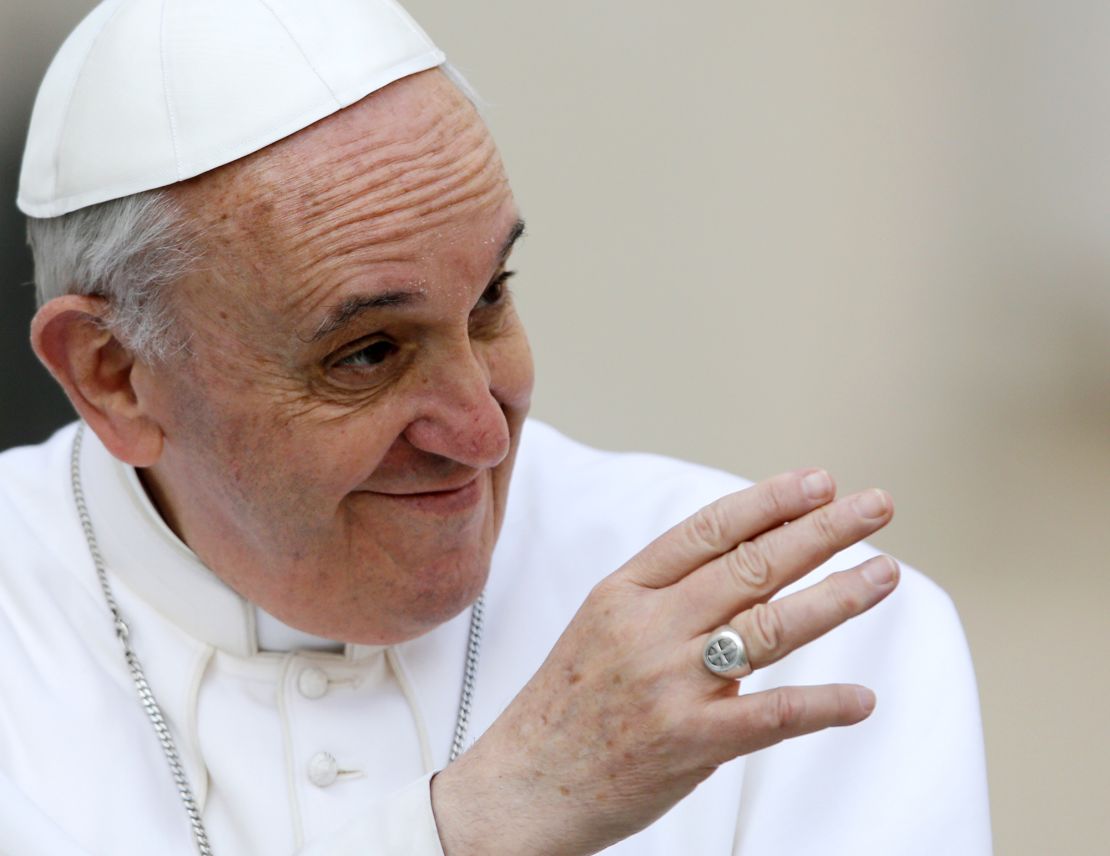CNN
—
It’s 7 a.m. on a freezing January morning in Les Gets, a ski resort in the French Alps. The sun won’t rise for another hour, but Sophie Crowther, having slept through her alarm, is sprinting up winding icy mountain lanes to make breakfast for 25 high-paying guests.
It’s her first day working in the mountains. Just a few days ago, she received a call informing her she was going to be parachuted in to work as a chef in a luxury chalet. Her welcome party the night before still ringing in her ears, she makes it to the chalet with her guests none the wiser.
“I was literally throwing up as I was making eggs and bacon for everyone,” she told CNN. “Unfortunate.”
This is the reality of the glamorous, and not-so-glamorous, lives of “chalet girls” — the staff catering to every whim of the rich and famous in Europe’s most luxurious ski chalets.
Each ski season, hundreds of mainly young people flock to the Alps, Dolomites and Pyrenees to work as chefs, cleaners, drivers, nannies and concierges to snow-seeking tourists paying heavily for the privilege.
If you’re one of the growing number of Americans heading to Europe for a cheaper ski holiday, you will likely have been confronted by them, both on the slopes and in the apres-ski bars long after the skiing is done.
They’re often derided as posh girls on a luxury gap year with a reputation of skiing all day and partying all night, but the reality for most is less glamorous.
“Chalet girls” are an institution in Europe’s most luxurious ski resorts. A small cohort of the millions employed in Europe’s winter sports industry, but one synonymous with the luxury chalets of Chamonix, St Anton and Courchevel, to name a few.
Emerging from a combination of the increasing affordability of foreign vacations in the 1960s and 70s, and the decline of the British aristocracy’s ability to maintain large properties across Europe, a ski season working as a chalet host became an avenue of adventure for girls recently released from the shackles of the British boarding school system.
Wages were low, the hours were long and the drinks in the local bars were cheap. The term “chalet girl” began to enter the British popular consciousness, carrying with it a hedonistic reputation for dominating the bars and nightclubs of the French Alps.
The job continues to provide an opportunity to spend months skiing in the world’s most exclusive resorts and be paid for the pleasure.
“It’s crazy. I remember Gordon Ramsay was staying in the chalet opposite David Beckham was staying,” India Hogg told CNN about her time working in a luxury chalet in France’s Courchevel 1850.
“It was a mental, different world.”
But, do current “chalet girls” deserve the reputation laid down by their forebears?
The 2011 film “Chalet Girl” stands as a monument to how many perceive the profession. Tamsin Eggerton portrays Georgie as the archetypal chalet girl: posh, airheaded, flirtatious with guests and mainly interested in drinking into the wee hours.
“That film bears absolutely no relationship whatsoever to the industry today,” VIP Ski’s Andy Sturt told CNN.
For a start, the role is no longer the preserve of privately educated girls from the south of England.
Past and present chalet hosts CNN spoke to for this piece said that, while the role is still predominantly female, a growing number of chalet hosts are men.
A female host currently working in a luxury chalet at a French resort, who spoke to CNN anonymously because she was not authorized by her employer to talk to the media, said her team was “majoritarily girls, but not by a landslide.”
Several luxury chalet providers report having an even gender split among their staff. VIP Ski’s Sturt told CNN the historical characterization of the chalet girl has been “gently eroded away over the past 20-odd years.”
You can’t look terrible, smelling of alcohol in front of these amazing, fantastic guests. You have to have it together, so there is a limit to what you can do.
Chalet worker
The industry, according to those who work in it, has become increasingly professional since it developed its firmly held reputation and gaining a place as a chalet host is now fiercely competitive.
Luxury ski chalet company Consensio Chalets receives around 15 applications for every available position, the company’s co-founder and managing director Ceri Tinley told CNN. This gives those applying to the prestigious Oxford University in the UK a higher rate of success than those applying to work as chalet hosts.
“We’ve got for this forthcoming winter about 240 positions overseas. And last year, we had 2,000 applications,” Sturt told CNN.
“This year, we’ve already had 500 applications, and we haven’t even finished the winter. So what’s happened is the demand for the few jobs that are available is huge, and it’s very, very hard now to get the job in catered chalet holidays in the Alps.”
Travel and work restrictions introduced in recent years — particularly as a result of the UK’s exit from the European Union — have meant that many companies are looking to hire those with dual-nationality passports and a number of companies folded altogether.
“Brexit has shifted the landscape,” Tinley told CNN.
“While it’s still possible to hire UK nationals, the need for work permits and visas means we now primarily recruit those with EU passports or a French Carte de Séjour (residence permit).”
Despite their quintessentially British reputation, chalet workers’ British contingent has been “getting smaller and smaller and smaller because it’s harder and harder to do seasons” since Brexit, the chalet worker in France told CNN. “And the tour operators that were here before that mostly did hire British now aren’t here anymore. So I think, yes, it is really dwindling.“
“The size of the industry is maybe 25% of what it was 10 years ago,” Sturt told CNN.
The increasing professionalism and competition for roles have meant that the hard-partying reputation of chalet staff is less deserved than in seasons gone by.
“I’ve had a week where I’d get about three hours sleep,” the chalet worker in France told CNN, but added “you can’t look terrible, smelling of alcohol in front of these amazing, fantastic guests. You have to have it together, so there is a limit to what you can do.”
However, chalet staff interviewed for this piece stressed that whilst the hedonistic sides of the job had decreased, they had not gone away altogether.
“I’d say, definitely we let off some steam,” Crowther, the former luxury French chalet chef, told CNN. “You’ve got to let go, because you’re just, you’re looking after people all day, every day.”
Since their earliest days, “chalet girls” have been viewed as exclusively descending from the upper classes.
“If you go back to the birth of chalet holidays, they were the children of aristocracy,” Sturt told CNN. “They were looking after mummy and daddy’s house or mum and daddy’s friend’s house.”
How much this remains the case is hard to tell.
“This stereotype doesn’t align with our recruitment experience,” Tinley told CNN.
Skiing is an expensive sport, and factors like climate change making lower altitude resorts unviable are only adding to the price tag. With pay limited, a major appeal of the job is its access to the slopes, so it naturally attracts experienced skiers.
“A lot of people are from very privileged backgrounds, especially if you’re a Brit doing it,” the chalet worker in France said of the background of her coworkers, adding that British guests “probably are expecting someone quite posh” to be working as chalet staff.
“Skiing is becoming extremely expensive,” Sturt told CNN, adding “You’re not going to come into a ski season without some understanding or involvement in the ski sector, and necessarily that means that your family has an element of wealth.”
There is no disputing the opulence of the chalets in which these people work. Saunas, wine cellars, priceless artworks and even raclette rooms dedicated to serving up melted cheese are not uncommon.
“Our clients expect to enjoy luxurious accommodation combined with exceptional service,” Tinley of Consensio Chalets told CNN, adding that guests look for “properties equipped with facilities like hot tubs, swimming pools and cinemas, complemented by attentive staff who anticipate their needs.”
While their guests are living in the lap of luxury, the same can’t be said for the chalet hosts.
“You are in the luxury sector, but you are not the guest,” a current chalet host told CNN.
The morning commute is often a 20-30 minute early morning hike up a mountain in the snow. During her time working as a chef in a luxury chalet in French resort Les Gets, Crowther was staying in accommodation underneath a bar. “We literally couldn’t sleep until like 4 a.m. some days,” she told CNN. “We’d have to have earplugs in. And the bond of not being able to sleep just really brought us together.”
Days generally start before 7 a.m. and frequently end after midnight. In that time, staff prepare the guests’ meals, ski gear and drinks, clean, make beds and more, trying to fit in some time on the slopes when they can.
Guests paying upwards of $3,000 per person expect their every conceivable need to be taken care of.
“You can’t say no, it’s that sort of high-level service,” Hogg said of her time working as a host in a luxury chalet.
Those who attempt to make use of the chalet’s facilities while their guests are on the slopes are liable to find themselves without a job or accommodation.
When it comes to hiring chalet staff, “it’s all about personality,” Sturt told CNN.
“They need to have personality and depth of character and experience to be able to host the dinner party every night. That’s the fundamental essence of it. So they need to be able to do all the details, all the domestic chores, but really it’s all about personality.”
Pay is generally not particularly high, with some reporting their monthly pay to be around £1,000 ($1,325) — potentially less than UK minimum wage considering the hours. This is generally topped up by tips which can be more than a monthly salary. Accommodation and ski gear and passes are also usually included in the package.
The long hours and demanding guests can put a strain on chalet staff, many of whom will be away from home for the first time in their lives.
“I definitely had highs and very low lows,” Hogg told CNN. “I remember walking into a bedroom, and it was an absolute (mess). And I was like, I can’t do this.
“But I’ve got to remind myself I’m in the mountains, and I think it’s that high and low that really gets me through it.”
